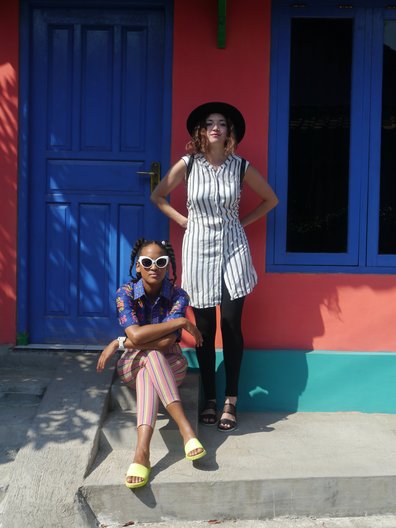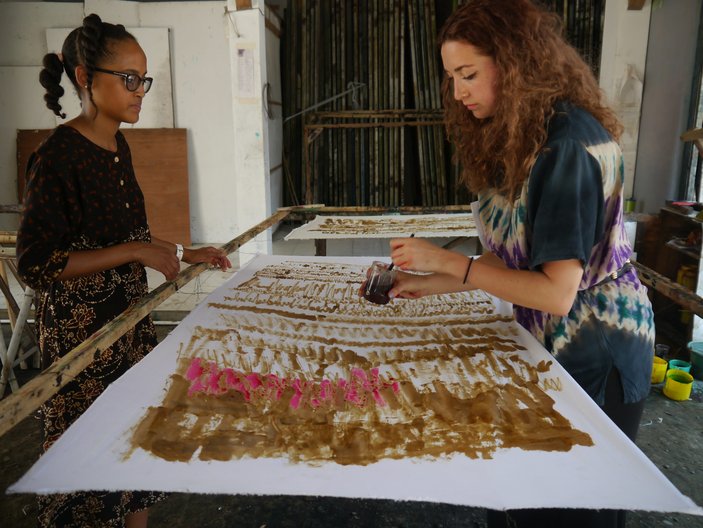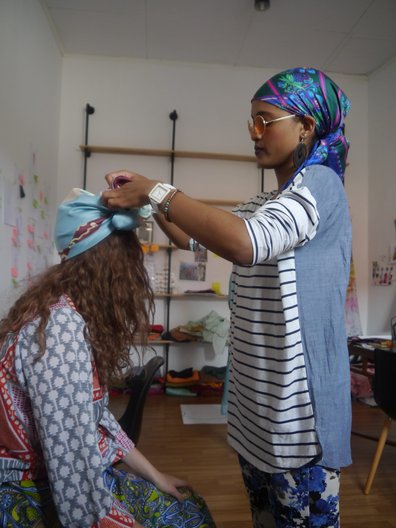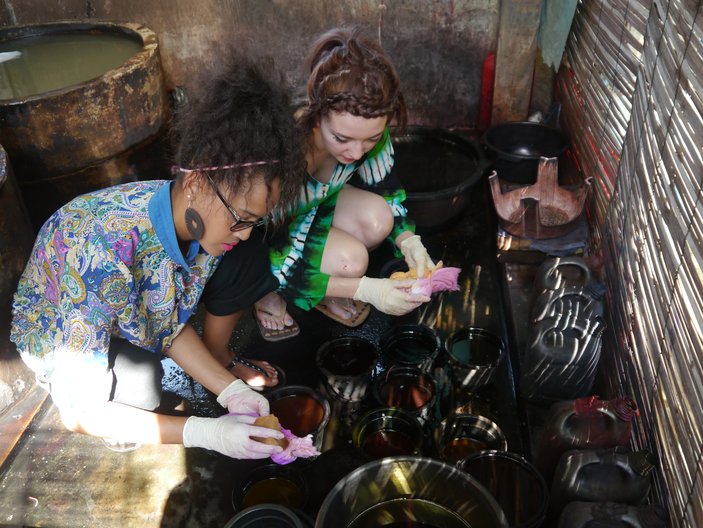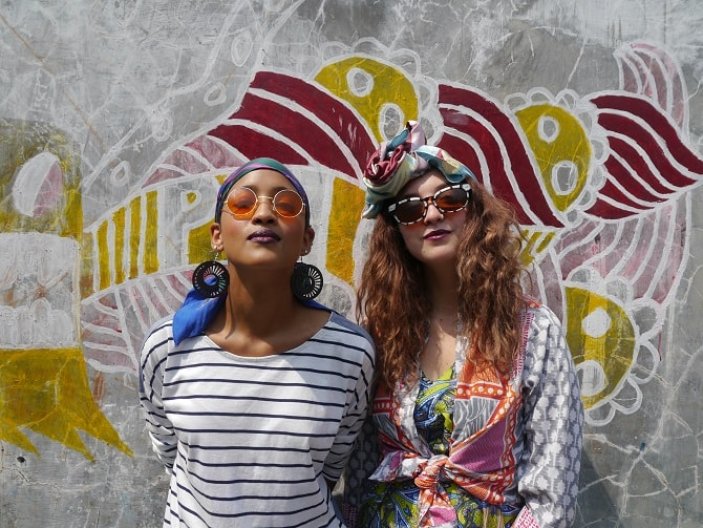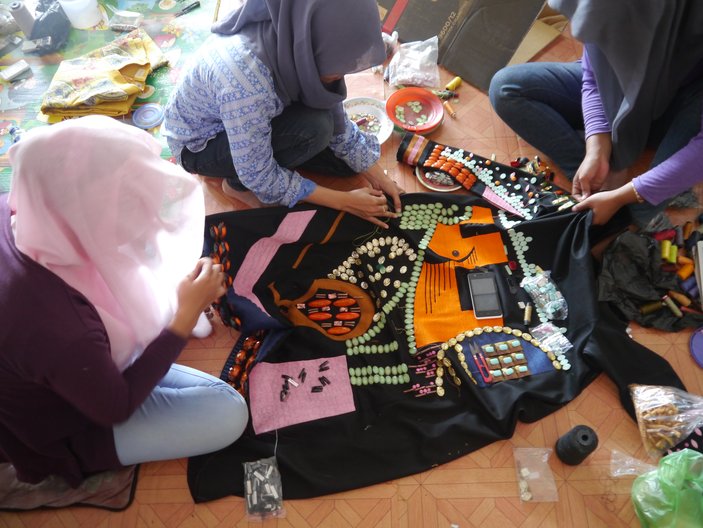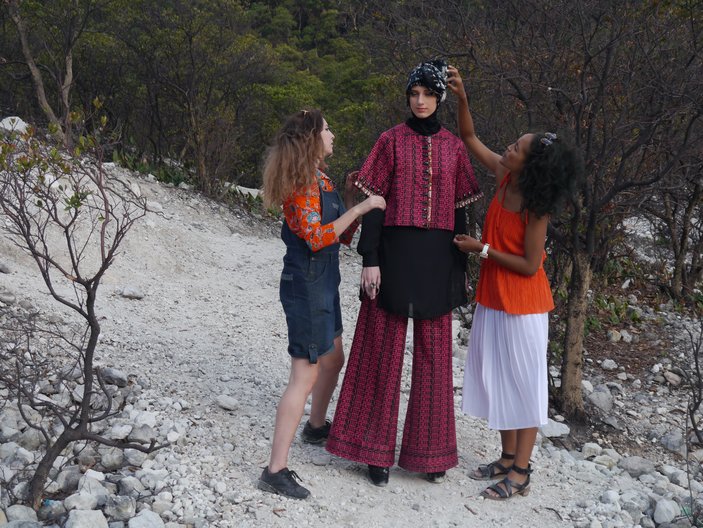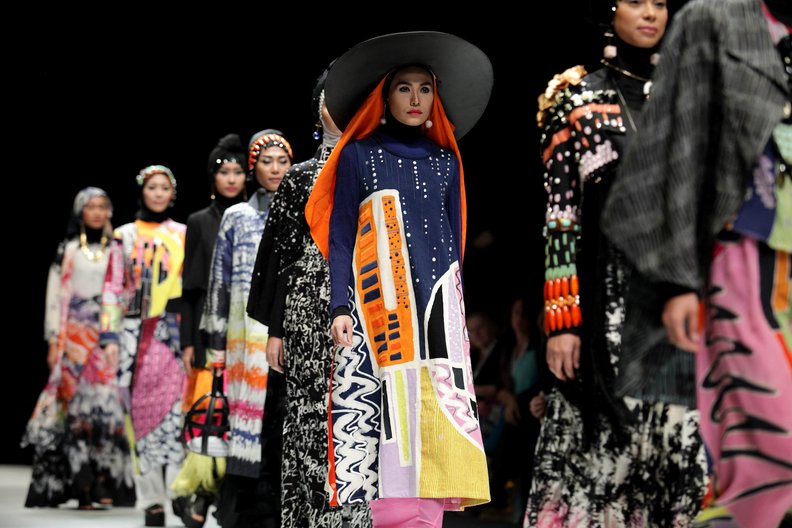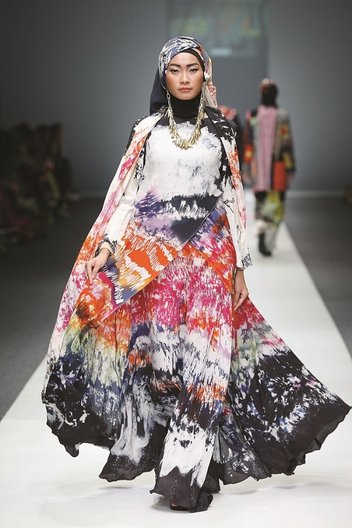18 December 2015
by Dapinder Chahal
Fashion Mission @fashionmission.id is a collaborative fashion residency programme facilitated by the British Council between Indonesian luxury modest wear designer Dian Pelangi and London College of Fashion. Winners of the residency, textile designers Nelly Rose Stewart and Odette Steele spent 2 months in Indonesia where they produced a beautiful collaborative collection called 'Coidentity'. This was showcased at Jakarta Fashion Week 2016 and is due to be exhibited in this year's International Fashion Showcase: Fashion Utopias.
We Talk Fashion with Nelly to hear about her experience.
First time venture to Indonesia. What were your expectations?
I was so excited. I am in love with places around the world which have created and sustained methods of craft and textiles for centuries. To be based in Pekalongan the city of batik was absolutely a dream come true. I expected a city of colour and creativity – and that is exactly what I received. I had no idea what to expect in terms of developing a fashion collection in a completely different environment to London but was met with such an incredible welcome.
We were absolutely blown away by your collaborated collection with Dian Pelangi. What is the story behind the name Coindentity?
Thankyou! We found the support in both Indonesia and London really overwhelming. The collaboration was something new and diverse and we really pushed every boundary possible in creating something as a team. The name co-identity was decided between Dian, Odette and myself and we felt that it was perfect to describe our ideals which were interconnectivity between women across the world- fitting with the modest fashion and muslim faith, being accessible as well as being a celebration of culture and multiple identity. It symbolized the coming together of three women with different cultural backgrounds – Predominantly with Dian representing Indonesia and myself and Odette representing London with Odette also combing her Zambian heritage into the mix.
It seems you’ve covered everything from applique to fringing to batik! Can you tell us about these techniques and why these were chosen and used to create the collection?
When we first arrived in Pekalongan we were introduced to all kinds of exciting different techniques from Batik to weaving and all kinds of dyeing and other colouring methods. We wanted to find a way to bring an urban element and illustrative nature using traditional techniques with a contemporary pattern and new innovation of application. Myself focusing on print and Odette on embroidery we worked consistently to develop the two disciplines alongside each other. My abstract approach to print design meant that I could use methods of wax and dyeing to create patterns which kept in line with the craft but were also new and radical.
How did you find working to modest wear design aesthetic and what challenges did it present?
Working closely with Dian and the team of girls at Dian Pelangi was invaluable in terms of understanding modest wear and dress. I have always been interested in female empowerment and support of one another across different parts of the globe and working alongside such a powerful movement was inspiring. I have the greatest respect for fashion being a reflection of the personal self and it felt incredible to design a collection which really could be worn by women all over the world. There is sadly still a lot of exclusion in fashion especially for modest dress so it was an honour to work with an advocator of change such as Dian Pelangi. It was a challenge initially to understand all of the elements in modest dress, but such a positive one as it meant we could experiment with layers and hijabs.
What inspired the co African/London/Indonesian theme?
We felt that the coming together of women from across the world, supporting one another and to stand for diversity was something which was at the centre of each of our beliefs as a designer so we combined this to create an inspired connection.
You both were panelists in the first ever sustainable fashion forum in Indonesia. As emerging designers from the UK, how did you find that experience? What do you believe are the key issues that were raised?
As a designer who puts sustainability at the forefront of my work I was so honoured to be part of this panel – especially with such respected speakers and advocates such as Lucy Siegle.
One of the key issues raised was about traceability in fashion and responsibility. I believe that the key issues were centered around supporting the supply chain instead of exploiting it. Representing the UK’s interest in sustainability and having input was important to me, as unfortunately a lot of high street UK retailers are associated with tragedies in the garment chain. To be part of such a sustainable model of a business such as the Dian Pelangi Company has proved to me that it is possible and it really does make a positive influence. As a group of panelists we all felt that it was important to support local communities and that the preservation of craft was vital to support economy. I think Indonesia is such a brilliant example of this, as a lot of the designers at JFW are dedicated to this. Some of the discussion was led by the innovative film ‘True Cost’ which unveils the truth behind high street clothing. Ultimately we discussed transparency and how to achieve this as designers, consumers and producers.
What were your highlights whilst undergoing this residency?
Of course seeing the catwalk show was overwhelming but my main highlight was working with such talented artisans and seeing every step of the process. It was so rewarding and exciting being involved in each step of the creativity involved in creating a collection. Starting with a drawing or an illustration or a big idea and then seeing it translated into a weave, or a print on a garment was amazing. I also loved experiencing all aspects of the culture and not just observing but being a part of it and contributing.
What is your favourite piece from the collection (if you can choose)?
My favourite piece would probably be the gown which I painted by hand with dye and wax. I also love the pieces which are the products of true collaboration – the applique patchwork which talented Odette constructed of our unused cuttings of textiles incorporated all of our ideas and had elements of everybody from the creative process so I think this is also a special piece for me.
What was the most challenging part of the project and how does it compare to working in the UK?
I found the translation at times challenging it was difficult explaining a creative vision through the medium of somebody else. However this actually heightened the process as sometimes we communicated with the artisans through creativity and art instead. I loved being able to have a personal connection with each worker and knowing that there was no exploitation involved in the process was amazing. Experiencing friendship and the kindness in collaboration being a part of each piece was incredible and incorporated true value into the pieces.
What advice do you have for other designers wishing to voyage overseas?
DO IT! It was the best experience I’ve ever had designing. I would definitely say it’s important to consider how you are going to work with and preserve a culture rather than appropriating it. I think collaborating is the best way to ensure this.
Has your experience changed your views of international collaboration?
I always knew that I wanted to work internationally in ethical fashion – discovering the story and sharing rather than just sourcing, However being a part of this residency has completely confirmed this. It has changed my view in reassuring me that it is 100% possible to achieve but the best way to do so it to take the journey and experience it yourself. To tell the story is also just as powerful.
What do you both plan to do next?
I will definitely be looking to work on other international design collaborations as well as looking to return to Indonesia. I also will be working on developing my blog into a more interactive platform to inform people in and outside the industry about sustainable fashion and textiles. Watch this space and please do get in touch! As I’ve learnt change happens in collaboration!
